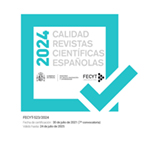Longitud vocálica y glotalización en la escritura jeroglífica náhuatl
Abstract
Vowel length and glottalization are phonological features exhibited by several languages of the world. These important features were treated in very different ways by different writing systems. Sometimes they were not represented at all (Linear B and the Roman alphabet); sometimes they were represented through the introduction of specialized signs (the Greek alphabet) or through the development of special scribal conventions (Akkadian and Persian cuneiform, and Maya writing). This work studies the representation of vowel length and glottalization in Nahuatl hieroglyphic writing. Analyzing the structure of the phonetic inventory of signs, the behavior of phonograms in phonetic complementation, and the use of logograms in rebus spellings, we conclude that vowel length was not recorded in Nahuatl hieroglyphic writing, neither through specialized phonograms nor through other scribal conventions. Glottal stops (V’), however, may have been represented sometimes through the convention of vowel insertion (-CV1-V1).
Downloads
Article download
License
In order to support the global exchange of knowledge, the journal Revista Española de Antropología Americana is allowing unrestricted access to its content as from its publication in this electronic edition, and as such it is an open-access journal. The originals published in this journal are the property of the Complutense University of Madrid and any reproduction thereof in full or in part must cite the source. All content is distributed under a Creative Commons Attribution 4.0 use and distribution licence (CC BY 4.0). This circumstance must be expressly stated in these terms where necessary. You can view the summary and the complete legal text of the licence.









